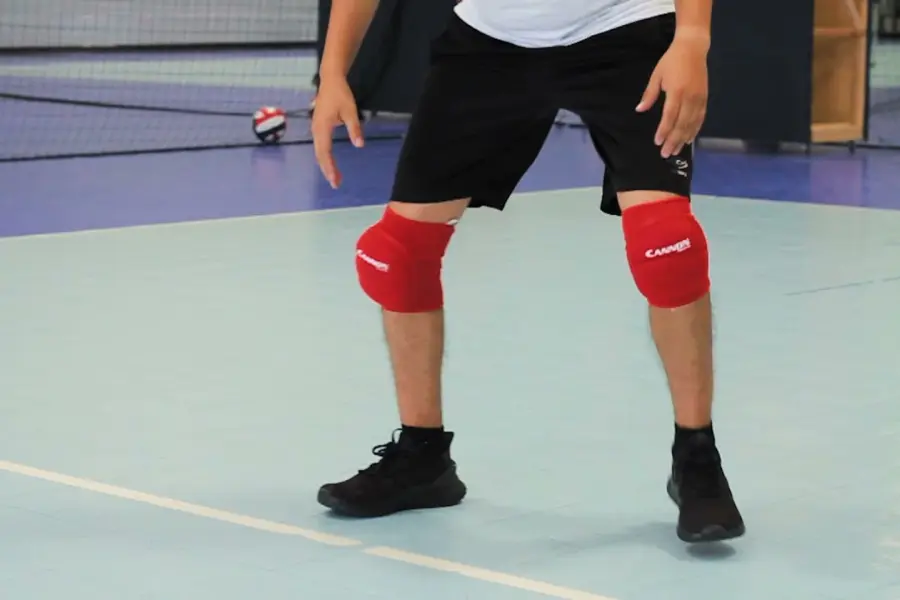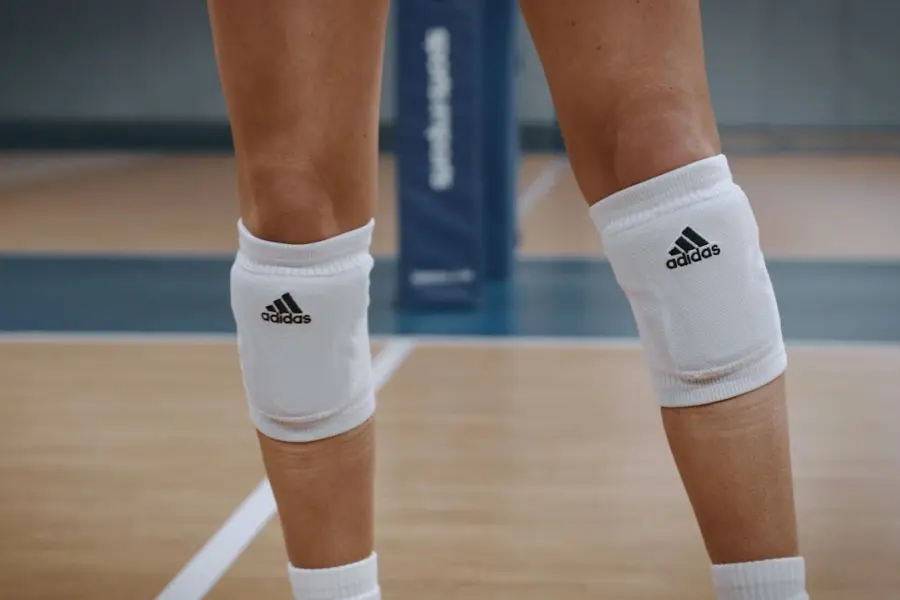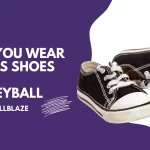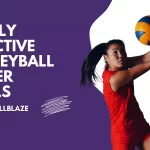The physical demands placed on an athlete’s knees by volleyball are substantial due to its dynamic and high-impact nature. Wearing knee pads is crucial for protecting against injuries and providing the necessary support.
A knee pad alone isn’t enough; they need to fit properly for maximum effectiveness. This article discusses how should volleyball knee pads fit for optimal comfort, performance, and injury prevention.
Understanding the Importance of Properly Fitted Knee Pads

Hitting the Court with Confidence
Knee pads are commonly worn in volleyball to boost confidence while diving, sliding, and making sudden movements. Your performance can be negatively affected by knee pads that do not fit properly, restricting your movement and making you hesitant.
Protection Against Abrasions and Impact
When you hit the ground, knee pads protect your knees from abrasion and impact injuries. By covering the vulnerable areas of your knee, a knee pad reduces your risk of skin abrasions and more serious injuries.
You may enjoy reading How To Wash Volleyball Knee Pads
Choosing the Right Size
Determining Your Size
The circumference of your knee must be measured accurately in order for knee pads to fit properly. Typically, knee pads are available in sizes ranging from extra-small to extra-large. Most manufacturers provide sizing charts to assist you in choosing the right size. To ensure a snug fit, follow these charts closely.
Avoiding Excess Material
In order to avoid discomfort or bunching up, knee pads should have no excess material. It is possible to be hindered by excess material and distracted by it. It is important to wear knee pads that stay in place during the game.
Assessing Padding Thickness

Balancing Comfort and Mobility
A good balance must be struck between comfort and mobility while providing adequate padding. In addition to affecting your agility and comfort on the court, the thickness of your knee pads can also affect your stability. Make sure your knee pads are adequately padded, but not so thick that they restrict your movements.
Focus on Impact Zones
The patella (kneecap) and the area below it should be protected by knee pads that concentrate their padding there. Volleyball injuries tend to occur in these areas. With properly cushioned knee pads, you can perform better without sacrificing protection.
Securing the Knee Pads
A Snug but Not Constricting Fit
A knee pad should fit snugly without being too constricting. Securing them firmly in place during the game will prevent them from sliding around. The elastic bands or straps of most knee pads can be adjusted to fit you perfectly.
Testing the Fit
Don’t forget to secure your knee pads before hitting the court. Confirm that they stay in place by performing some warm-up exercises. Ensure that the straps or bands are comfortable and secure by adjusting them if necessary.
You may enjoy reading How to choose volleyball knee pads
Regular Maintenance and Replacement

Keeping Them in Top Condition
Investing in properly fitted knee pads will enhance your performance and safety. Care instructions provided by the manufacturer should be followed to maximize their lifespan. You can machine wash most knee pads, but make sure they are not damaged before doing so.
Knowing When It’s Time to Replace
It is possible for knee pads to lose effectiveness over time as a result of wear and tear. A deteriorating pair may need to be replaced if you notice fraying or reduced padding. You won’t get the same protection from worn-out knee pads.
Also, read Can You Use Volleyball Knee Pads for Basketball?
FAQs
Are knee pads necessary for volleyball?
To prevent abrasions and impact injuries to your knees, knee pads are essential in volleyball.
Can I use the same knee pads for different sports?
To ensure the right level of protection and comfort, it’s best to use knee pads designed specifically for volleyball.
How often should I replace my volleyball knee pads?
Wear and tear can cause knee pads to fray or lose padding over time. Replace them as soon as you notice these signs. Regular use usually results in this after a year or two.
What should I do if my knee pads keep sliding down during a game?
You should make sure that the straps or bands that come with your knee pads are securely fastened. For a snug fit, adjust them as needed.
Are there different knee pad styles available for different positions in volleyball?
There are knee pads designed for specific positions, yes. Knee pads may be shorter for liberos for maximum mobility, but longer for blockers and hitters for added protection.
Conclusion
Keeping your knee pads properly fitted on the court will enhance your performance, prevent injuries, and boost your confidence.
It is important to make sure your knee pads are the right size, that they fit snugly but not constructively, that they are of the right padding thickness, and that they are maintained and replaced regularly. Thus, you will be able to enjoy volleyball in a safer and more enjoyable manner.
You may enjoy reading What Is A Good Hitting Percentage In Volleyball?





